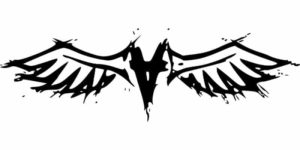To build an Eldritch Knight for D&D 5e, consider the following:
- Choose a fun race with high Strength and Constitution bonuses
- Build a shield and weapon fighter for tanking
- Lean on defensive and instant effect spells
Eldritch knights combine the fighting prowess of a fighter with arcane magic to enhance their defense, range and combat abilities. Focusing on the schools of abjuration and evocation, the eldritch knight casts energized offensive spells alongside defensive buffs for tanking. For this character build, I want to create a spell-crafting tank who has disdain for paladin types. I like to think of this guy as an arcane spell tank.
You can try this build in my original pirate adventure, Dead Man’s Tale. Click here or below for more information.
Choose a fun race with high Strength and Constitution bonuses
Though I will certainly need a high Intelligence score, Strength and Constitution bonuses are more likely than a Strength/Intelligence combo. Think of something off the wall, like a hobgoblin, mountain dwarf, half orc or Leonin.
The half orc gains a +2 to Strength and +1 to Constitution—a classic melee brawler with high HP. This character could come off as a dumb ogre but is in-fact quite intelligent. A stoic and rational nature helps quell his internal orc rage as he benefits from enhanced critical damage and endurance.
Leonin and mountain dwarves have this combination switched, with +2 Constitution and +1 Strength. Playing a tank, I’ll need to consider my defensive capabilities. Constitution will grant me extra HP as I level, so it needs to be thrown into the mix either way. Plus, I’ll be able to resist many magical effects that use Constitution as a saving throw.
A hobgoblin could offer another useful combination for this character—a +2 Constitution and +1 Intelligence bonus. Of course, I’ll need to remember Strength in my initial build, but this race offers a rare combination of bonuses. Also, the hobgoblin has an ability called Saving Face, which offers extra points to an attack or save roll equal to the number of allies within sight. Five is the maximum for this bonus, and the ability can only be used once a day.
Build a shield and weapon fighter for tanking
I’m going to lean into the classic fighter role for my party. Therefore, I’m going to build this character as a tank. Heavy armor (not necessarily plate), a shield and a one-handed weapon is my go-to strategy. Let’s say I’ll start the game with 18 armor, 16 for chainmail and +2 for the shield. I’ll use spells to increase my AC further when I reach level 3 and become an eldritch knight. In my other hand, I’ll need a decent weapon—a longsword or hammer.
I’ll choose the Dueling Fighting Style to add +2 my damage rolls. Even with a focus on protection, I’ll want to dish out some damage. It’s free damage. No die roll or skill check.
At level 2, my fighter will gain Action Surge and Second Wind. Once a day, Second Wind allows me to pull from a well of stamina and add 1d10 + fighter level to my HP. Action Surge gives me an extra action once a day when I’m in a tight spot. This action includes attacks and bonus actions. Level 5 brings an Extra Attack, which could potentially give me a turn with 3 attacks.
Related Posts:
Guide to Building a Rune Knight in: DnD 5e
| Guide to Building a Triton Character: DnD 5e
|
My final classic fighter ability will be Indominable, which I gain at level 9. I’ll be able to reroll a saving throw once a day, putting my strong Constitution score to good use. Already, the fighter has a solid balance of offensive and defensive abilities that will come in handy.
Other eldritch knight abilities
Outside the spells my eldritch knight can use, I will learn Weapon Bond, War Magic, Eldritch Strike, Arcane Charge and Improved War Magic.
Weapon Bond allows me to magically bond a weapon to myself. Enemies will not be able to disarm me unless I’m completely down for the count. Plus, I can teleport my weapon into my hand as long as we’re on the same plane of existence.
War Magic grants me the ability to make a bonus attack after casting a cantrip at level 7. Now, I can cast true strike and make a bonus attack. At this level, I’ll be able to swing 3 attacks in one turn using this trick and Action Surge.
Eldritch Strike occurs at 10th level and causes enemies I hit with a melee attack to have disadvantage on saving throws against my spells. This means I can strike an opponent, then cast a spell that knocks them prone. The disadvantage on this roll gives us more of a chance to knock enemies prone or deal area damage.
Arcane Charge essentially gives me the ability to use misty step, allowing me to teleport up to 30 feet away when I use my Action Surge. I gain this ability at level 15.
Improved War Magic grants a similar effect as War Magic. However, now I’m granted a bonus attack after casting a spell. This means I can knock opponents down and gain advantage on a counter strike with heavier firepower.
Lean on defensive and instant effect spells
If we temper down the need for high Intelligence checks for attack rolls or spell DCs, we can utilize our characters build to its fullest effect. This is a fighter that pulls from a select list of spells to cast. Therefore, Intelligence scores won’t be as high as a regular wizard. Of course, they should be higher than normal, just not wizard-level.
That said, there are plenty of effective spells that have instant effects I can capitalize on for my own strategy. Plus, I can throw in an effective damage spell to shake things up.
Cantrips
First, I’ll be able to choose any two cantrips from the wizard spell list.
Blade Ward grants me resistance to bludgeoning, slashing and piercing damage from weapon attacks until the end of my next turn. This extra defense will be a crucial advantage against physical attackers.
Fire bolt can offer a ranged option with considerable effect. After I land a ranged spell attack, my opponent takes 1d10 fire damage. Anything flammable ignites, which could be a handy bonus effect in the right situation.
Minor illusion always seems to be useful when given to a creative mind. However, I could consider mage hand or mending as alternative choices. These spells offer a flare of ability outside of battle, giving me options to use during the story.
Related Posts:
Guide to Building a Bard College of Creation: DnD 5e
| Guide to Building an Aasimar Character: DnD 5e
|
1st level spells
My first two spells in the 1st-level bracket come from the abjuration and evocation schools. However, the third spell can come from any wizard school.
Shield is my first choice and is from the abjuration spell list. Until the beginning of my next turn, I gain +5 to my armor class. Plus, I gain immunity to the magic missile spell as a nice counter-wizard bonus.
Earth tremor is an excellent choice for an evocation spell. The spellcaster shakes the earth and each surrounding creature must make a Dexterity saving throw. On a fail, the creature takes 1d6 bludgeoning and is knocked prone. The knocked prone part is of particular interest to me, as I could waste enemy movements and give my allies advantage on attack rolls.
For my 3rd spell, I’m thinking feather fall or detect magic for adventuring options. Feather fall slows the rate of fall for me and my party to 60 feet per turn and protects us from fall damage. We simply land on our feet. Detect magic will come in handy in all kinds of situations: sensing hidden clues, sniffing out evil wizards, finding treasure and detecting danger.
As I level higher, I’ll keep this strategy in mind and lean on defensive abjuration spells.
In conclusion
This fighter carries more intelligence than the average sword-and-shield brawler, which opens options for hidden depth. As I mentioned before, this fighter plays like a spell tank—a magically enhanced defender of allies. Maybe spells like shield sound way too effective to pass up as a tank and brought you to play an eldritch knight. However, we can add a dynamic backstory for the sake of game.
The question that sticks out is: why not a paladin or cleric?
I would suggest it’s the rejection of the religious aspects—giving this arcane warrior a direction, beliefs and a worldview. The reason for this rejection could be a personal vendetta against the gods, or just an atheistic worldview. Maybe this character experiments with different magics and dark arts—choosing spells from the necromancy playbook when possible.







A character with an atheistic world view in D&D essentially is like a flat earther today.